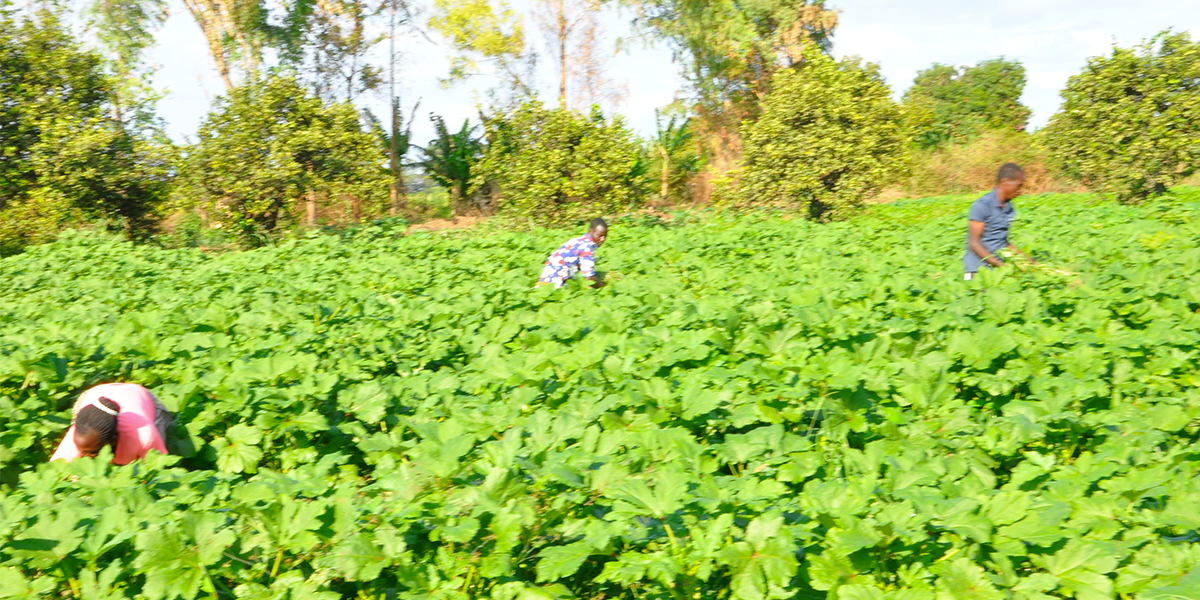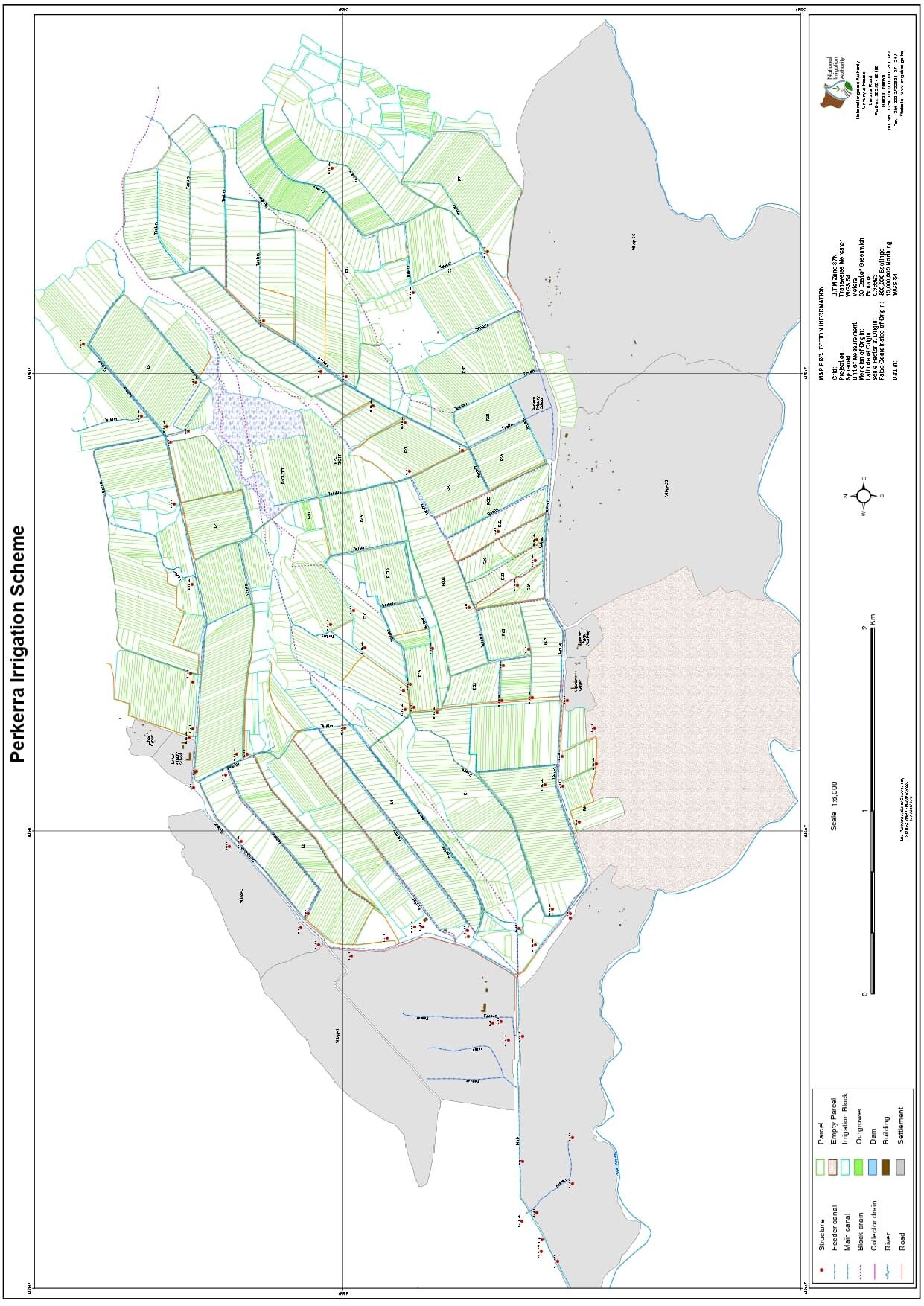
Background Information
Perkerra Irrigation Scheme is situated 100Kms North of Nakuru near Marigat Township in Baringo South Sub-County. Its construction started in 1954 after several feasibility studies, including the last in 1936, showed the Njemps plains were suitable for irrigation. The construction did not start in 1936 as expected due to lack of funds until the declaration of “state of emergency” in 1952 that saw the Mau Mau detainees held in Marigat made to start working on the site as a form of punishment.
It derives its name from the River Perkerra, which is the source of irrigation water and the only permanent river in the region.
Current Status
The Authority has designed the proposed Radaat Dam that will hold more than 120 million cubic metres of water. The construction of Radaat Dam and use of solar driven pumps to pump water from Lake Baringo will, among other benefits and goals, help to step up the expansion of Perkerra Irrigation Scheme from the current 2,750 acres to more than 50,000 acres.
| Crop | Acreage | Growth Stage | Approx. yield, Kg | Price Kes | Expected Income Kes | Marketer |
| Maize seed | 135 | Maturity | 270,000 | 66 | 17,820,000 | Monsanto |
| Green Grams | 420 | Harvesting | 270,000 | 66 | 17,820,000 | Monsanto |
| Beans | 90 | Flowering | 32,400 | 100 | 3,240,000 | Sim law seeds |
| Cow peas | 55 | Flowering | 19,800 | 120 | 2,376,000 | Sim law seeds |
| Sorghum | 100 | Harvesting | 135,000 | 45 | 6,075,000 | Kenya Seed Co. Ltd |
| Total | 800 | 56,727,000 | ||||
Statistical Data
| Location/County | Baringo County |
| Year of Establishment | 1954 |
| Gazetted Area | 5,800 acres |
| Main Crop | Seed Maize |
| Other Crops | Horticultural crops |
| Area under Irrigation | 2,750 acres |
| Source of Irrigation Water | River Perkerra |
| No. of Farmers | 1,625 households |
| Type of Irrigation | Gravity fed open earth channel conveyance with open furrow application system. |
| Other Crops | Green grams, Okra, Cowpeas, Watermelon, onions, Vegetables |
Projected Benefits/ Benefits being realized
Perkerra Irrigation scheme has brought a lot of benefits to the local community, Marigat town, baringo County and the Country at large, and they are as follows:
- Enhanced food security
- Provided access to water by households and livestock.
- Improved the livelihoods of farmers in the community.
- Created employment opportunities.

